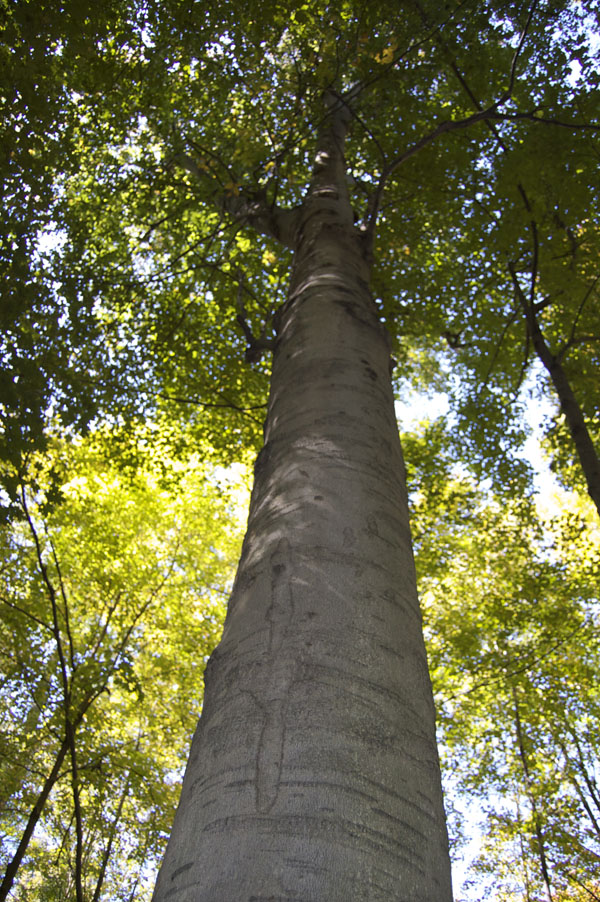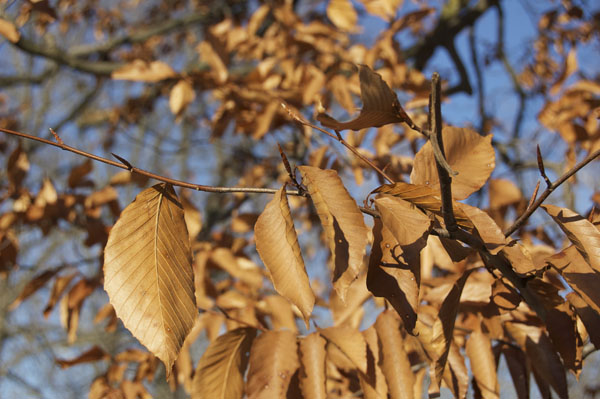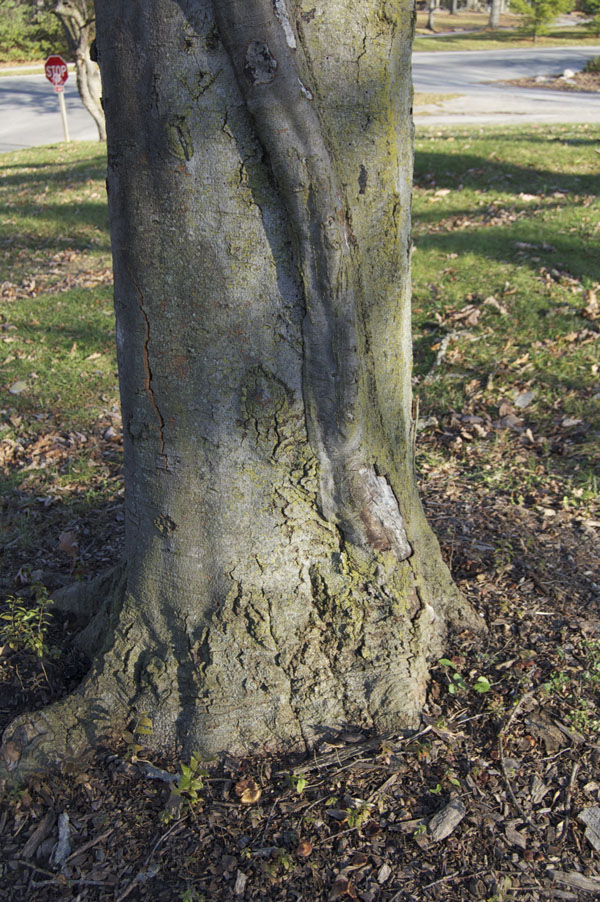Most of us wouldn’t think of scratchbuilding a locomotive without learning about the prototype first. Usually a modeler will want to have as much detailed info about a specific engine as possible, same with a freight car or structure. For a lot of modelers now, the days of generic modeling are past. There are just too many variations in the amount and types of details; plus information is now widely known and accessible, effectively removing the excuse for doing lazy modeling because you couldn’t find some specific detail.
Yet when it comes to a landscape, modelers will spray paint some cotton puffballs green or black, sprinkle ground up sofa cushion material on them, plop a bunch onto a hillside and call the resulting mess scenery. This can work effectively for scales like N or Z, where individual details are so small that rendering them is pointless. Once you get up to HO and the larger scales, individual details and textures take on a different role by becoming more prominent to the eye.
Trees are one of the most important elements of landscape modeling in miniature. Well-done model trees can lift the overall impression of a scene by adding a stunning amount of realism. Realistic trees also contribute to our perception of scale by placing the modeled elements in their proper proportions. A supposedly mature tree that is barely taller than the train car next to it destroys the sense of illusion and realism for both objects.
Model trees can be frustrating in that they are time consuming to produce in quantity and expensive when purchased commercially. (Ask Joe about that sometime.) Further, many modelers find them intimidating because of the assumed artistic skills required to build a good-looking miniature tree. It’s no wonder that painted cotton balls with green sprinkles on top starts looking like a good solution to covering up bare hillsides.
As with other aspects of the hobby, once you acquire some knowledge of the subject and some basic skills, things don’t look quite so hard after all. Hence the idea that real trees can be prototypes too. In this post I’m going to outline a common species of tree that grows across the eastern half of the country, taking a closer look at its characteristics, growing patterns and other factors that will contribute to making a more realistic tree model.
In scratchbuilding that brass loco there are no shortcuts, no quick tricks to getting a superior result. A friend once said that good models have “build time” in them, and this is certainly true where tree modeling is concerned. Obviously, not every tree on a layout will be to these standards but some certainly could be. For those that are, I guarantee visitor comments will be favorable. Let’s take a closer look at the American Beech.
American Beech
The American Beech tree is common across the eastern and southern United States and Canada. Slow growing, mature trees will range in height from 50-100 feet and can live 300-400 years. The Ohio and Mississippi River Valley regions have the most beech tree populations. It is easily identified by its smooth pale gray bark texture and distinctive branch structure. In a dense forest setting, beeches will grow straight and tall with a small leaf canopy at the top where the sunlight is more abundant (photo below). In more open settings the overall height will be shorter, the trunk a bit more massive in diameter and the branch structure will radiate out prominently on all sides forming a rectangular silhouette. Main branches will be quite large, with secondary branches having a serpentine growing pattern to them.

A mature 400 year old Beech tree. Notice how much trunk there is before the branches begin. This is a dense forest where sunlight is precious.
Beeches tend to be shallow rooted. Although not as bad as Silver Maples whose massive roots protrude out of the ground, the shallow roots will hoard any ground water, making it hard for other vegetation to grow under them. The dense leaf canopy also limits the sunlight needed for most types of smaller growth and groundcovers. In good growing conditions beeches are tolerant of most diseases, although certain types of insects such as borers can damage the tree. Weather effects like severe winds or snow and ice buildup can break off branches, and then infiltrate any cracks in the tree structure and cause quite a lot of damage, leaving the tree susceptible to further harm.

Beeches will sometimes retain portions of the leaves throughout the winter. The leaves have an oblong shape and are clustered in groups of five. The sawtooth edge is another means of identifying the tree
The leaf form consists of an oblong oval shape with variegated edges. Beeches will often retain a portion of their leaves through the winter, which also makes them easy to spot. Beech wood is classed as a hardwood, like oak, with a similar grain. Beech is used in furniture making, flooring and veneer. It also makes excellent firewood.
Links:
http://forestry.about.com/od/silviculture/p/beech_tree.htm
http://www.blueplanetbiomes.org/american_beech.htm
http://www.sfrc.ufl.edu/4h/American_beech/amerbeec.htm
http://en.wikipedia.org/wiki/Fagus_grandifolia
Modeling an American Beech
Modeling a specific tree or even a specific species of trees is an art modelers have yet to embrace. I suppose because the traditional view of the hobby is to consider scenery as less important to the trains themselves. It’s nice to have but not that critical. This is a personal choice and also a reflection of one’s overall goals in the hobby. For those modeling the typical large, basement filling type of layout, numerous and usually severe compromises will be made across the board just to keep the project moving along.
In contrast to this mind-set, I look at model scenery as a three dimensional art form and as a means of establishing a contextual framework for the other models. By that I mean the way scenery sets the stage for a layout, in the same manner that a theater stage provides a setting and sense of place for the play.
So if one were to model a specific type of tree rather than the generic stand-in, how would one proceed? The same as with any other model, by looking for the specific characteristics of the subject tree or species of trees. By understanding the particulars of the subject, one can proceed with more confidence. For example, I noted the regions of the country where the beech tree is native. Therefore if one is modeling the desert southwest, you won’t find any beech trees in these regions. The descriptions of the overall shape, height, branch structure, bark texture and color, growth patterns and so on, also provide strong clues for modeling. All will help a modeler place the trees properly in the miniature landscape.
Think all of this is nonsense? Perhaps, but I’ve seen online discussions of which rivet sizes are correct for a given model, or what size of track spike is most realistic, go on for days. It’s a modeler’s choice after all.
Perhaps I am ahead of the curve here. Perhaps some think I missed the curve altogether (might have). That said, modelers in other parts of the world have been modeling very specific scenery elements for many years. If we don’t consider new ideas, the hobby with remain stagnant. I think many of us would agree; that’s not a good thing.
Regards,
Mike


Mike,
Great post. For those interested, recommend obtaining Gordon Gravett’s book “Modelling Trees; Part One-Broadleaf Trees”. Excellent resource, and full of some great idea (don’t forget the birds and their nests in your trees!)
http://britishrailwaybooks.co.uk/books/ISBN/1905184883.php
Matt
Thank’s Matt.
I’m aware of Gordon’s book but haven’t seen a copy for myself. It’s on my list of good things to have.
Regards,
Mike